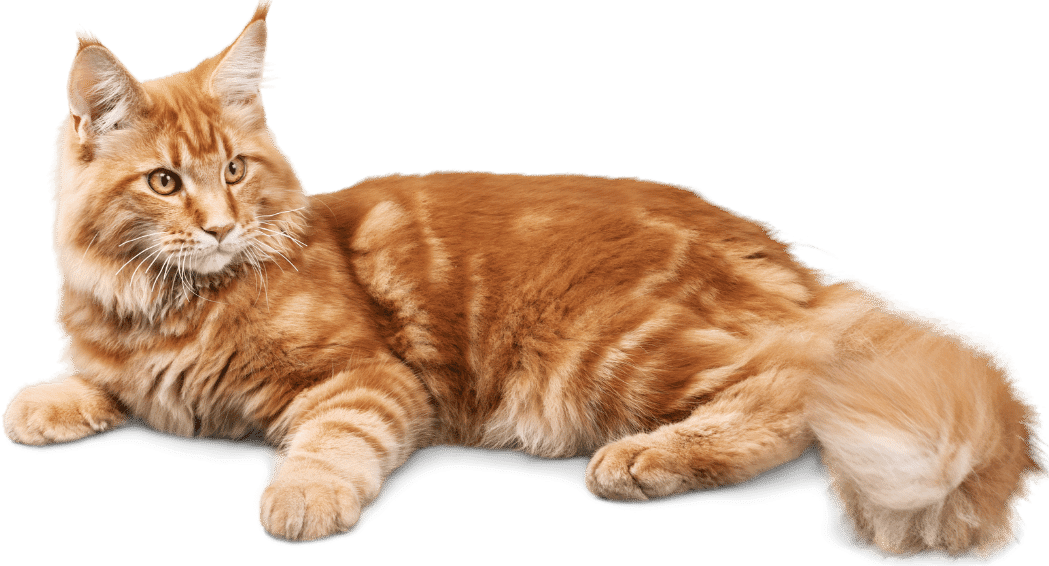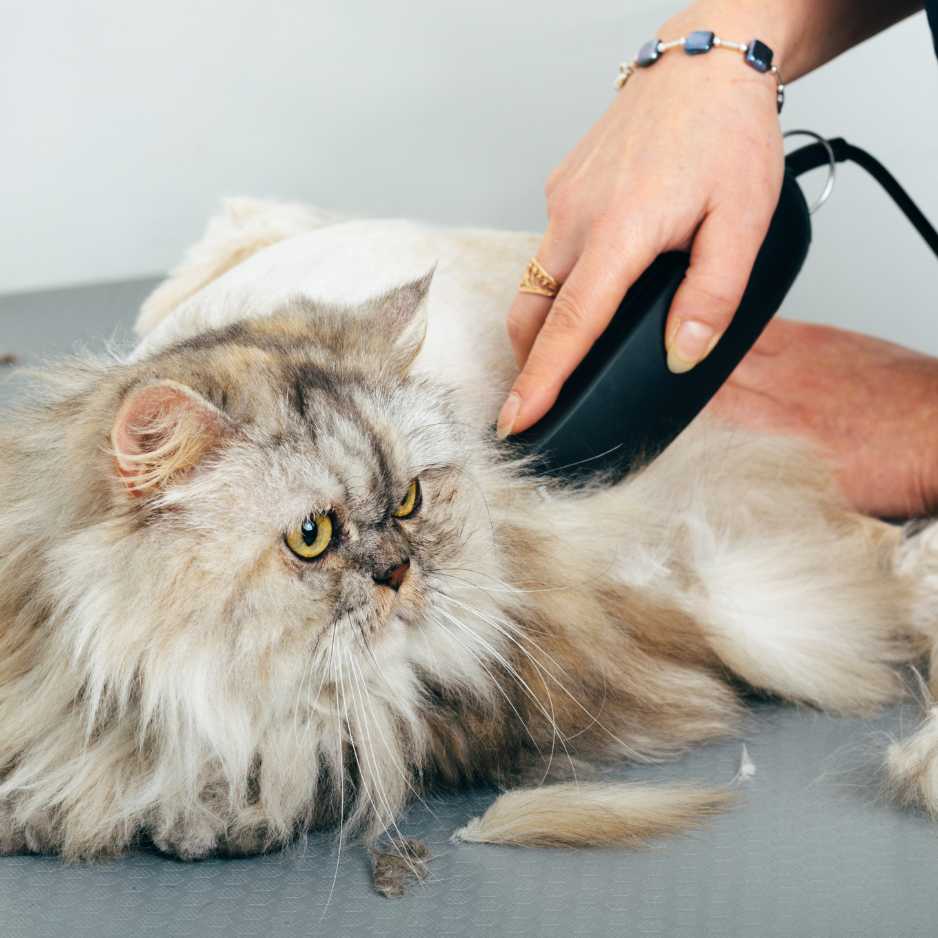Cutting your cat’s hair at home can seem challenging, but with the right techniques and tools, it can be a manageable and even enjoyable experience. Regular grooming is essential for your cat’s overall health, as it helps prevent matting, reduces shedding, and promotes a healthy coat. Whether you have a long-haired breed like a Persian or a short-haired cat that just needs a light trim, this guide will help you through the process step by step.
In this article, we’ll cover the benefits of cutting your cat’s hair at home, the tools you’ll need, and a detailed, easy-to-follow process for trimming your cat’s fur safely. Let’s get started!
Why Cut Your Cat’s Hair at Home?

While cats are generally excellent self-groomers, there are times when your feline friend may need a little extra help. Here are the main reasons to consider cutting your cat’s hair at home:
- Preventing Mats and Tangles: Long-haired cats, especially Persians, Ragdolls, and Maine Coons, are prone to mats and tangles. Regular trimming can prevent painful mats from forming.
- Reducing Shedding: A good trim can reduce the amount of fur your cat sheds, keeping your home cleaner and reducing allergens.
- Maintaining Comfort in Hot Weather: Cats with thick coats may feel uncomfortable in hot weather, and a trim can help them stay cool.
- Cost Savings: Professional grooming can be expensive, especially for long-haired cats. Learning to trim your cat at home can save you money.
- Health Benefits: Trimming your cat’s fur also gives you an opportunity to check for skin issues, fleas, or ticks that might otherwise go unnoticed.
Tools You’ll Need to Cut Your Cat’s Hair at Home
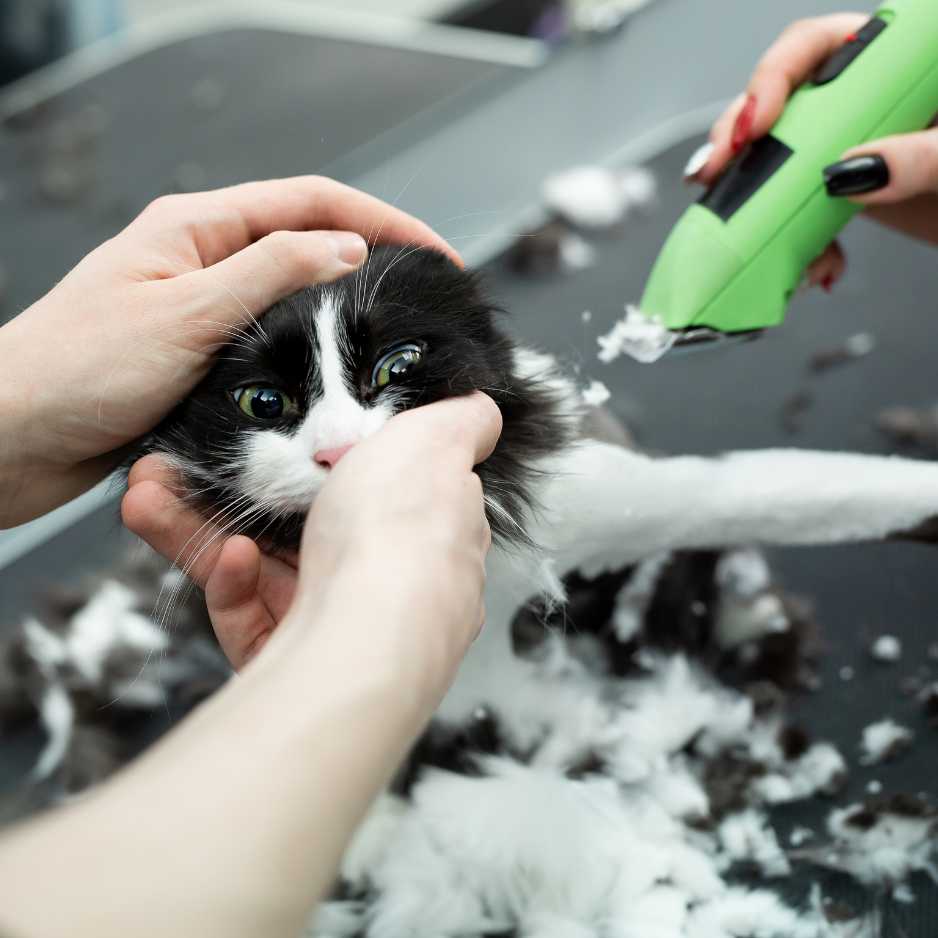
Before you begin, make sure you have the right tools. Having the proper equipment ensures your cat’s grooming session goes smoothly and safely.
- Cat-Specific Clippers: Use clippers designed for pets, as human clippers may not be effective for a cat’s finer fur.
- Sharp Grooming Scissors: These are essential for precise trimming, especially around delicate areas like the face and paws.
- Comb and Brush: A comb helps detangle the fur and a brush smooths the coat before cutting.
- Thinning Shears: These are great for thinning out thick fur and avoiding a choppy look.
- Towels or Grooming Cape: To control the fur and keep your cat comfortable during the grooming session.
- Styptic Powder: In case you accidentally nick your cat’s skin, styptic powder stops bleeding quickly.
- Treats and Distractions: Use treats or toys to help keep your cat calm throughout the process.
Preparing Your Cat for a Haircut

Preparation is key to a successful grooming session. Cats can be finicky and may become anxious, so creating a calm environment is crucial.
Step 1: Create a Quiet Space
Choose a quiet room where your cat feels comfortable. Close the door to prevent them from running away during the grooming process. Play soft music or white noise to help keep them calm.
Step 2: Brush Your Cat
Before you begin trimming, brush your cat thoroughly to remove any tangles or mats. Brushing also helps lift the fur and prepares it for cutting.
Step 3: Calm Your Cat
Grooming can be stressful for cats, so take the time to calm them down before you start. Offer treats, speak softly, and use a gentle touch. If your cat is particularly anxious, you might want to groom them over a few sessions instead of doing everything at once.
Step-by-Step Guide: How to Cut Your Cat’s Hair at Home
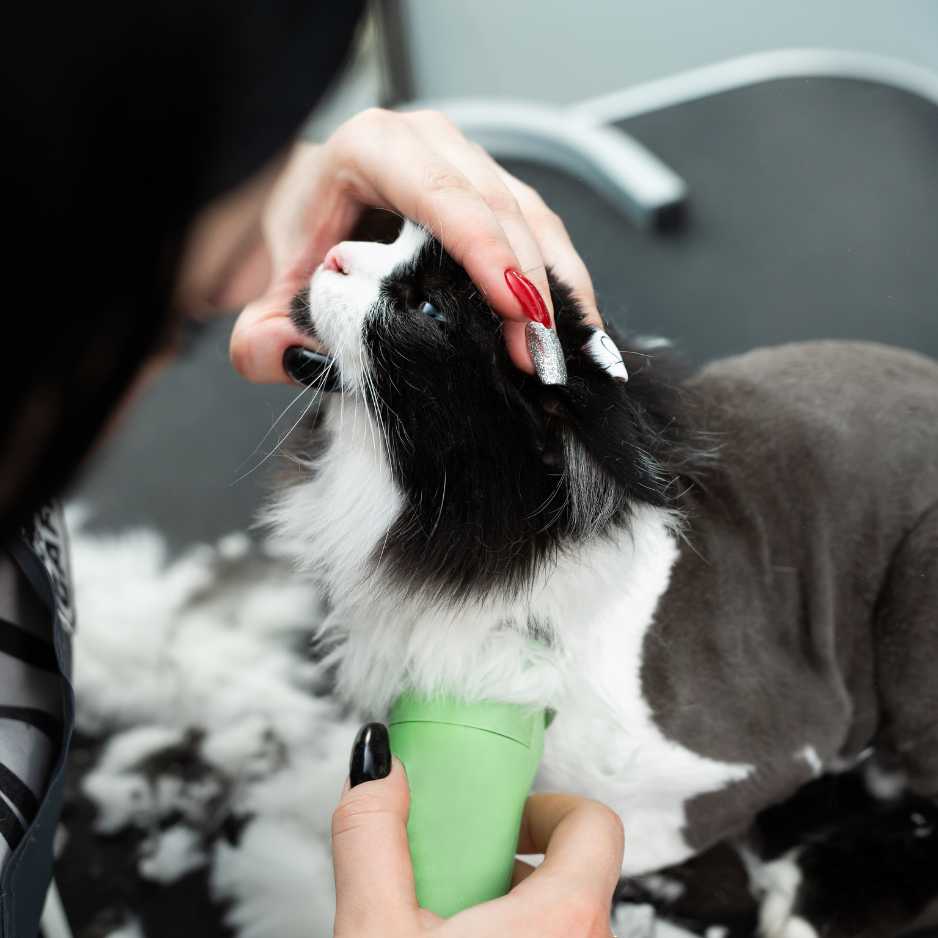
Follow these steps to cut your cat’s hair safely and effectively at home.
Step 1: Start with Clippers
Clippers are ideal for removing large sections of fur. Choose a blade length appropriate for your cat’s coat—longer blades for a subtle trim and shorter ones for a more significant cut.
- Clipping Direction: Always clip in the direction of hair growth to avoid irritating your cat’s skin.
- Back and Sides: Start by clipping your cat’s back and sides. Hold the skin taut to prevent the clippers from pulling at the fur.
- Sensitive Areas: Be extra careful when trimming around the belly, legs, and tail. You might prefer to use scissors for these areas to avoid injury.
Step 2: Scissors for Detail Work
Use scissors for precision trimming around the face, paws, and other sensitive areas. Be very cautious around the ears and eyes.
- Face and Ears: Use small, curved scissors to carefully trim the fur around your cat’s face and ears.
- Paws and Legs: Trim the fur around your cat’s paws to keep them neat and prevent mats. Scissors are best for these areas to ensure accuracy.
- Thinning Shears: If your cat has thick fur, use thinning shears to blend the cut and avoid harsh lines.
Step 3: Take Breaks
Cats can become restless during grooming, so be patient and take breaks as needed. Offering treats throughout the process can help keep your cat calm.
Tips for Grooming Long-Haired vs. Short-Haired Cats

Not all cats require the same grooming routine. Here’s how to approach grooming based on your cat’s fur type:
- Long-Haired Cats (e.g., Persians, Maine Coons): These cats require frequent grooming to prevent mats. Trim their fur every 4-6 weeks and brush daily to prevent tangles.
- Short-Haired Cats (e.g., British Shorthair, Siamese): These cats shed less and typically only need trimming during the shedding season. Regular brushing is usually sufficient for maintenance.
Aftercare: Post-Haircut Tips for Your Cat
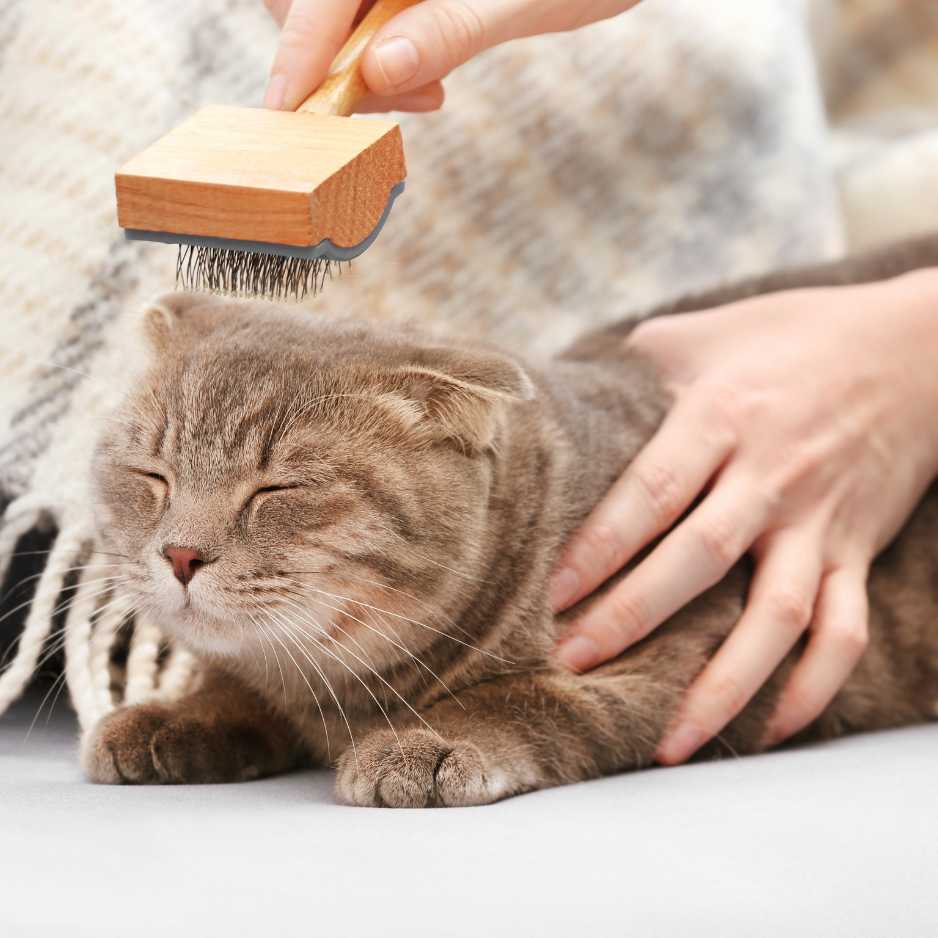
After grooming your cat, it’s important to follow up with some aftercare to ensure their skin and fur stay healthy.
- Brush Again: After trimming, go over your cat’s coat with a brush to remove any loose fur.
- Check for Cuts: If you notice any small cuts, apply styptic powder or consult your vet if necessary.
- Give Your Cat a Bath (Optional): Some cats benefit from a quick bath after grooming to remove loose fur. Use a gentle, cat-friendly shampoo and make sure they are completely dry before letting them roam.
- Reward Your Cat: Make the grooming experience a positive one by offering treats and praise. This will make future grooming sessions easier.
Common Mistakes to Avoid When Cutting Your Cat’s Hair
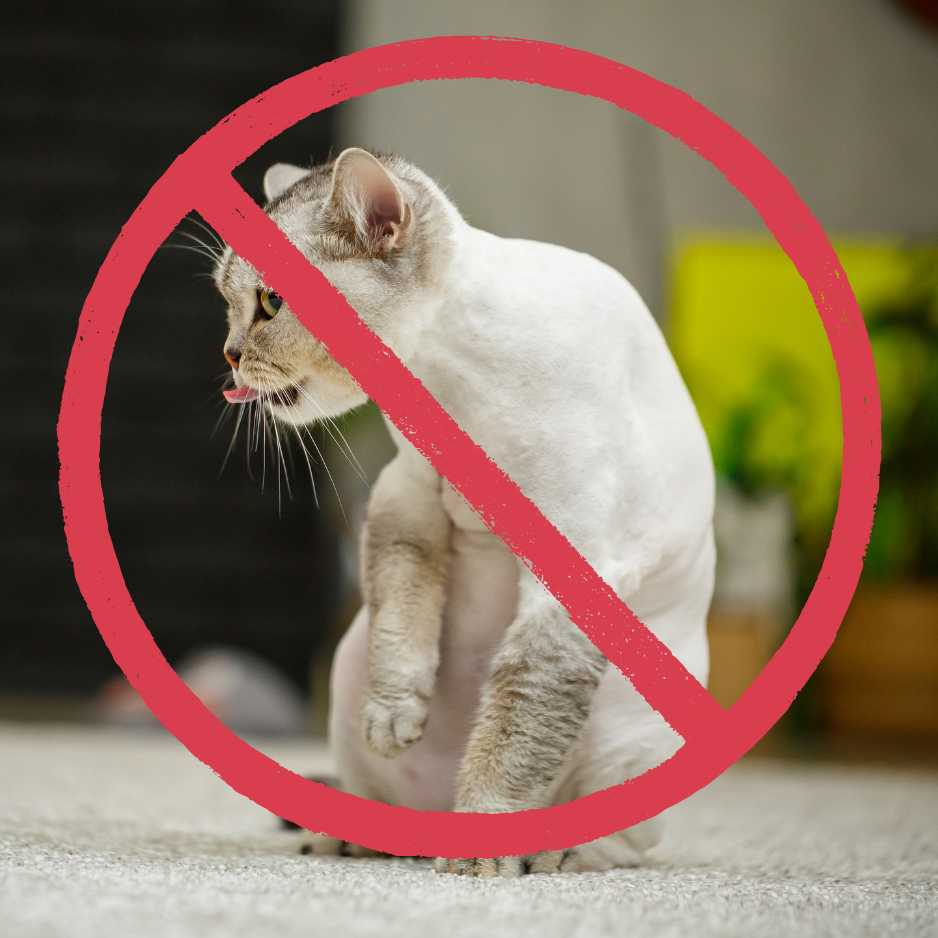
Avoid these common mistakes to ensure a safe and successful grooming session:
- Using Dull Scissors or Clippers: Dull tools can pull at your cat’s fur, making the process uncomfortable.
- Cutting Too Close to the Skin: Always leave some length in your cat’s coat to avoid skin irritation and injury.
- Skipping Brushing: Brushing is a critical step to avoid mats and ensure an even cut.
- Rushing the Process: Take your time and be patient. Grooming in short sessions is better than rushing and causing your cat stress.
Conclusion

Grooming your cat at home is a great way to save money, keep your cat comfortable, and strengthen the bond between you and your pet. While it can take some practice to master, following the right steps and using the correct tools will make the process easier and more enjoyable for both you and your cat.
With regular trims, your cat’s coat will stay healthy, tangle-free, and looking its best. Remember to stay calm, take breaks, and always prioritize your cat’s comfort during grooming.
FAQs About Cutting Your Cat’s Hair
Is it safe to cut my cat’s hair at home?
Yes, as long as you use the right tools and follow proper techniques, it is safe to cut your cat’s hair at home.
How often should I trim my cat’s hair?
Long-haired cats may need trimming every 4-6 weeks, while short-haired cats only need trims during shedding seasons or when their fur becomes unruly.
What if my cat becomes stressed during grooming?
If your cat shows signs of stress, take breaks and try to make the experience as calm and positive as possible. Use treats, and don’t rush the process.
Can I use human clippers to cut my cat’s hair?
It’s best to use clippers designed for pets. Human clippers may not be suitable for your cat’s fine fur and can cause discomfort.


